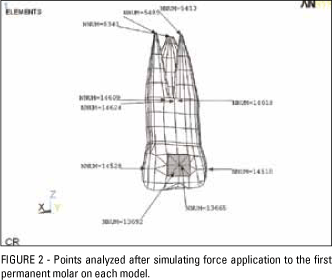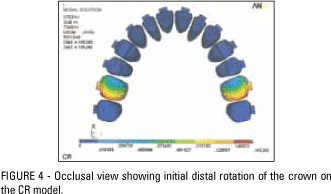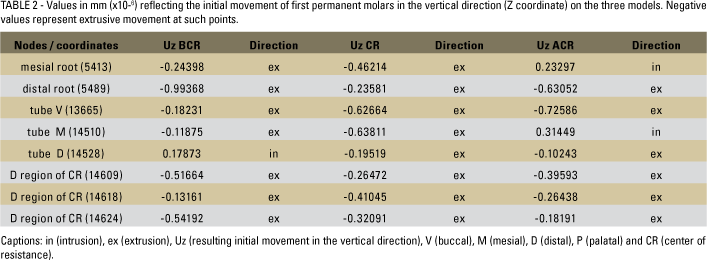OBJECTIVE: To analyze maxillary molar displacement by applying three different angulations to the outer bow of cervical-pull headgear, using the finite element method (FEM). METHODS: Maxilla, teeth set up in Class II malocclusion and equipment were modeled through variational formulation and their values represented in X, Y, Z coordinates. Simulations were performed using a PC computer and ANSYS software version 8.1. Each outer bow model reproduced force lines that ran above (ACR) (1), below (BCR) (2) and through the center of resistance (CR) (3) of the maxillary permanent molars of each Class II model. Evaluation was limited to the initial movement of molars submitted to an extraoral force of 4 Newtons. RESULTS: The initial distal movement of the molars, using as reference the mesial surface of the tube, was higher in the crown of the BCR model (0.47x10-6) as well as in the root of the ACR (0.32x10-6) model, causing the crown to tip distally and mesially, respectively. On the CR model, the points on the crown (0.15 x10-6) and root (0.12 x10-6) moved distally in a balanced manner, which resulted in bodily movement. In occlusal view, the crowns on all models showed a tendency towards initial distal rotation, but on the CR model this movement was very small. In the vertical direction (Z), all models displayed extrusive movement (BCR 0.18 x10-6; CR 0.62 x10-6; ACR 0.72x10-6). CONCLUSIONS: Computer simulations of cervical-pull headgear use disclosed the presence of extrusive and distal movement, distal crown and root tipping, or bodily movement.
Headgear; Finite Element Method; Tooth movement







